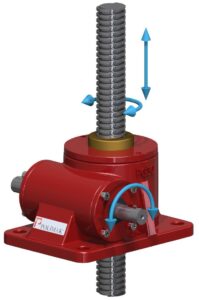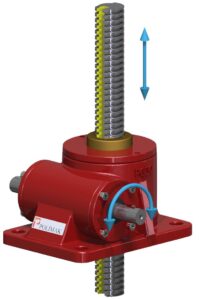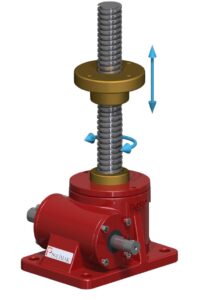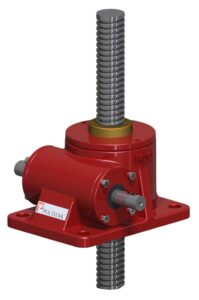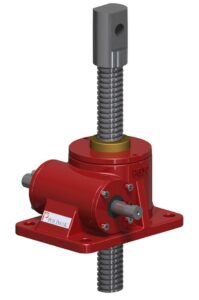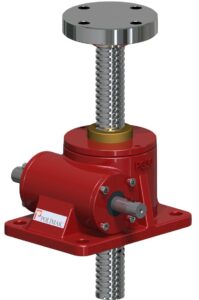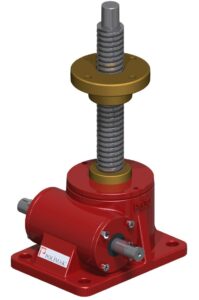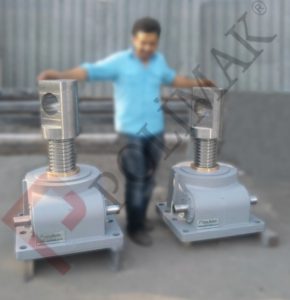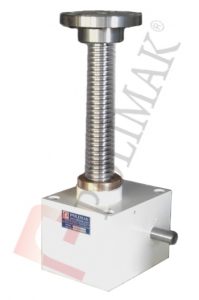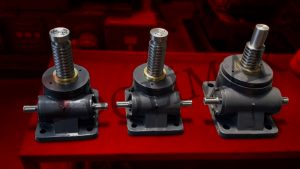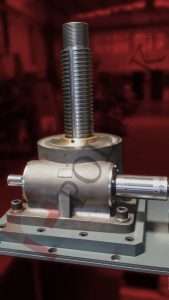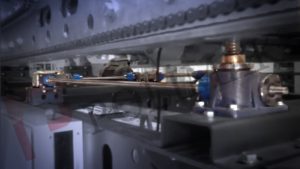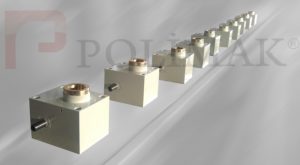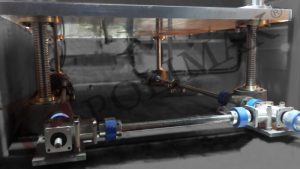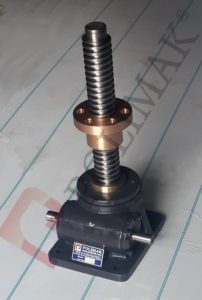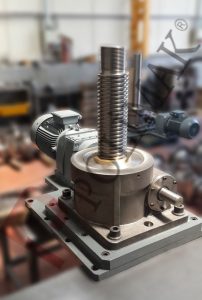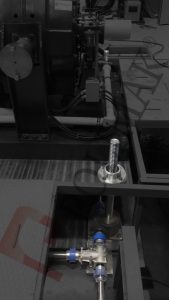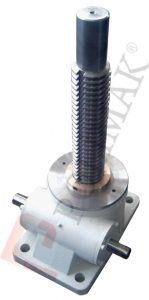Screw Jack
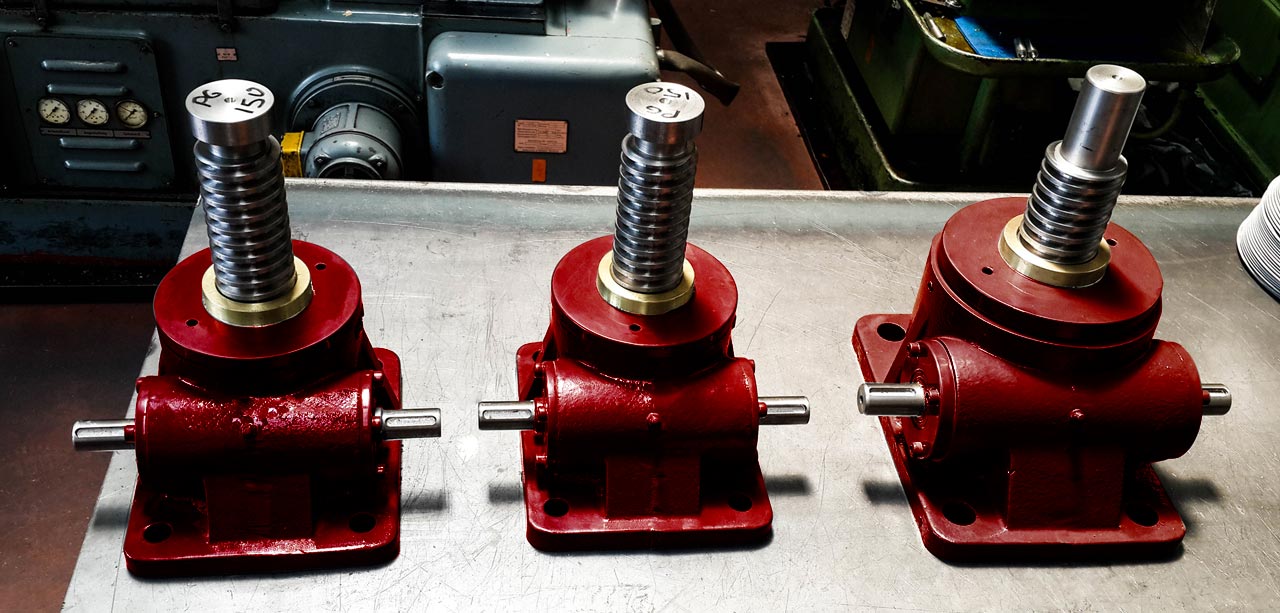
Screw Jack Catalog
Screw Jack Selection Questionnaire
SCREW JACK WORKING PRINCIPLE
The main components of screw jacks are; trapezoidal lifting screw also known as lead screw, worm screw, worm gear and gear housing. A worm screw is rotated manually or by a motor. With the rotation of the worm gear, the lead screw in it moves upwards or downwards linearly. The feed rate of the screw depends on the turning speed, the number of teeth of the gears and the size of the screw pitch.
In some models of jackscrews, The lifting screw does not move up and down. It only rotates around its axis. A lifting nut (also known as a travelling nut) moves along the lead screw. The lifting nut of the screw jack is made of bronze to decrease friction.
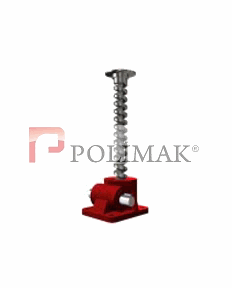
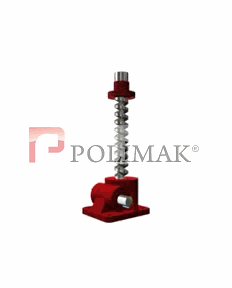

SCREW JACK TYPES
There are three main types of screw jacks; Travelling Screw Type, Travelling Wedge Screw Type and Travelling Nut Type.
V-Travelling Screw Type
If the screw end connection is connected to the free load, the screw rotates around its own axis without moving up and down. If it is connected to a fixed load, the gearbox in the jack receives the movement from the gear unit and the trapezoidal screw translates only linearly up and down. In other words, it acts the same as the wedged type, so there is no need to open the wedge channel to trapezoidal screw.
K-Travelling Wedge Screw Type
The wedge channel is opened to the screw to prevent the rotation of the screw and only the upward and downward movement of the screw is provided. In this way, the importance of the screw connection to an external fixed part is eliminated.T-Travelling Nut Type
With the rotation of the gear, the lead screw that is inside the screw jack only rotates around its axis. The flange, which is produced from the bronze material on the screw shaft translates linearly upwards or downwards. One of the purposes of using such systems is the lack of ducting or storage for the movement of the screw used in the screw type and wedge screw type. In addition, the screw does not come down from the jack base.SCREW JACK END TYPES
Plain End
Plain end type screw jacks are used in multipurpose applications. Linear motion is provided thanks to the wedge option in free loads. Screw jack systems with self-locking systems prevent the load from slipping back. This type is used in projects that require efficiency and precision.Clevis End
Clevis end type screw jacks provide positive mechanical movement, precise positioning and smooth lifting speeds. Its standard configurations include pulling and pushing features. Its self-locking system keeps the load steady and prevents the load from going back. Due to its movable head, it is used in angular moving mechanisms.Flange End
Flanged screw jacks provide positive mechanical movement, precise positioning and smooth lifting speeds. Its standard configurations include pulling and pushing features. Its self-locking feature keeps the load steady and prevents it from going back.Travelling Nut
Travelling nut type screw jacks provide positive mechanical movement, precise positioning and smooth lifting speeds. Its self-locking feature keeps the load steady and prevents it from escaping. It can be used as a product lifting system on movable bronze nuts with fixed rotation of the screw in places where the trapezoidal screw should not come down, like platform lifting units.INDUSTRY SOLUTIONS
Screw jacks are used to raise, align, position and hold loads and are found all over the world. They are ideal for a wide range of applications because of their excellent reliability and synchronization which is hard to achieve with other handling methods such as pneumatic or hydraulic lifting systems. Jack screws are increasingly finding use as an alternative to hydraulic and pneumatic systems.Click here for our screw jack applications.
